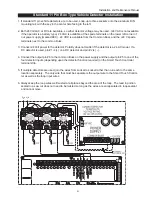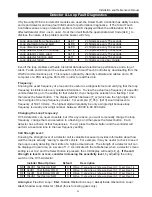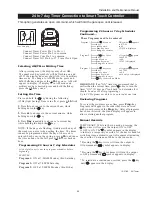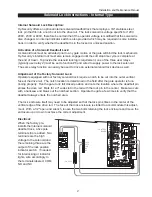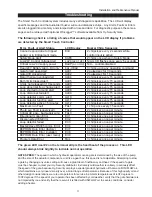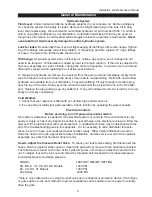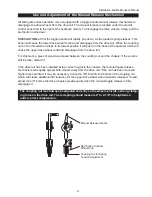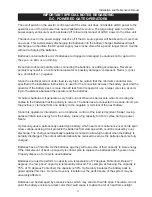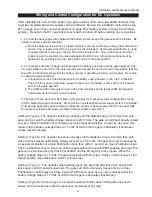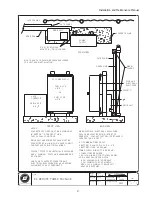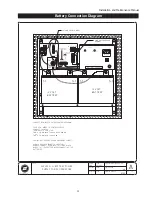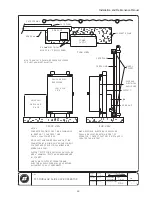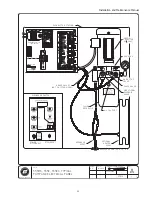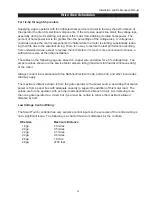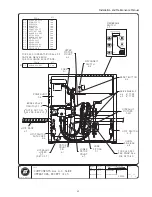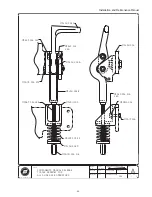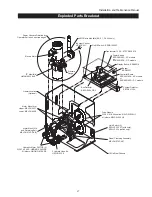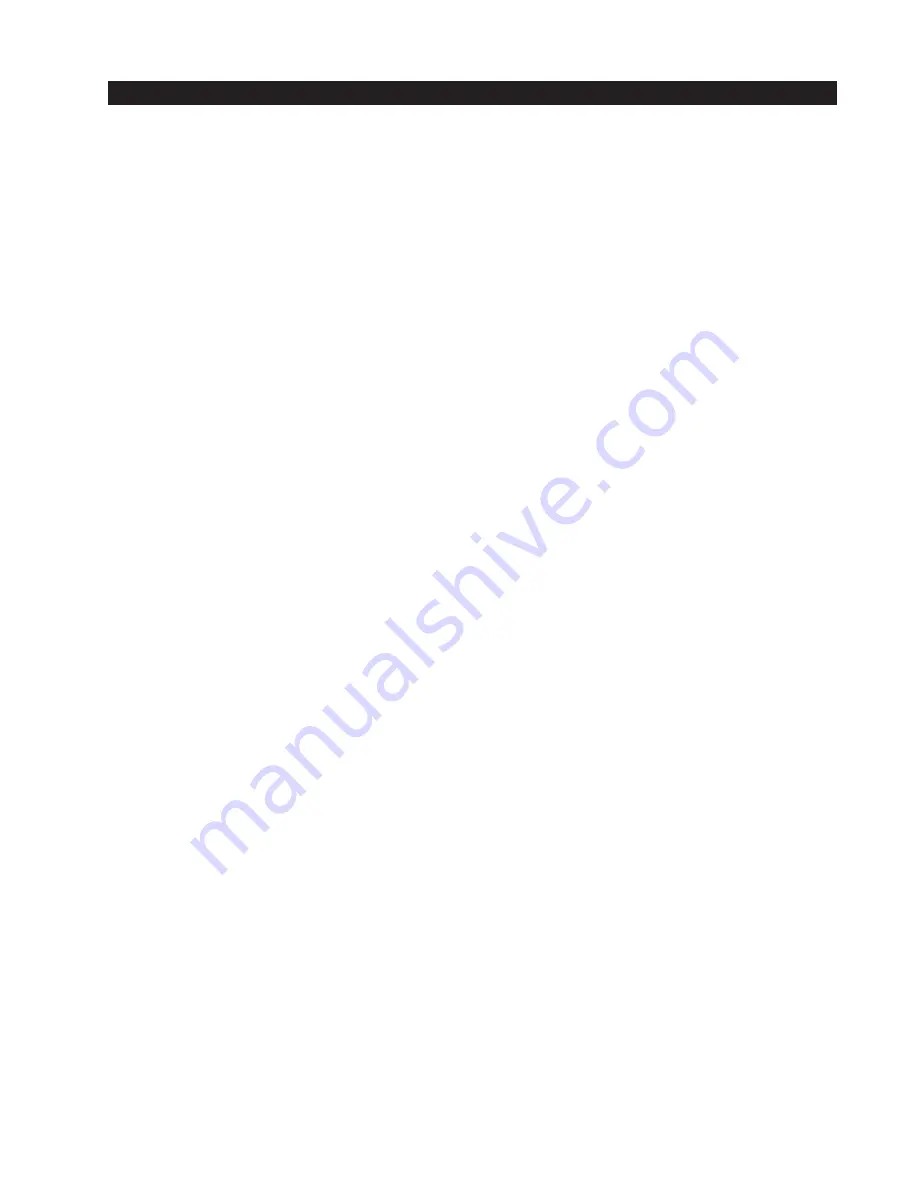
Installation and Maintenance Manual
52
General Maintenance
Hydraulic System
Fluid Level: Under normal conditions, hydraulic systems do not consume oil. Before adding any
oil, check the system thoroughly for leaks. Remove the bright metal plug in the tank, fill to plug
level, then replace plug. We recommend our Uniflow hydraulic oil; part number H004 1.0, which is
sold in one-gallon containers by our distributors. Automatic transmission fluid may be used, al-
though its performance in cold weather will be sluggish unless the operator is well heated. Never
use brake fluid. It will severely damage the entire hydraulic system.
Look for leaks: Occasionally there may be slight seeping at the fittings after some usage. Tighten-
ing of the fittings will usually correct the problem. If the leaking persists, replace “O” rings, fittings
or hoses, if required. No further leaks should occur.
Oil Change: A hydraulic system does not foul its oil, unlike a gas engine, so oil changes do not
need to be frequent. Oil breakdown caused by heat is the main concern. If the unit is subjected to
high use, especially in a warm climate, change the oil more frequently. In general, we recommend
draining the reservoir and replacing the oil at five-year intervals.
To change the hydraulic oil, remove the reservoir from the pump unit and completely, empty it and
wipe the reservoir clean and clean the derby screen before re-assembling. Refill with new Uniflow
hydraulic oil (available from your distributor). To avoid overfilling, fill only through removable plug
near the top of the tank. Slowly pour the oil into the tank until the oil is within one inch of the filler
port. Replace the plug and wipe up any spilled oil. If any oil is allowed to remain, it will dry to a very
sticky and messy consistency.
Cold Weather:
1. Check that your reservoir is filled with our Uniflow high performance oil.
2. Ice can partly or totally jam gate operation. Check function by operating the gate manually.
Electrical Controls
Before servicing, turn off power disconnect switch
No routine maintenance is needed for the electrical system or controls. If the environment is very
sandy or dusty, or has many insects be certain to seal all holes in the electrical enclosure. Blow the
dust out of the electric panel with compressed air. A qualified technician may troubleshoot with the
aid of the troubleshooting guide in this appendix. If it is necessary to call a distributor for assis-
tance, be sure to have your model and serial number ready. Other helpful information would in-
clude the name of the job, approximate date of installation, and the service record of the operator,
especially any work that has been done recently.
How to Adjust the Pressure Relief Valve: To check your relief valve setting, first disconnect the
hoses. Run the operator either open or closed (the gate will not move with the hose disconnected.
The relief valve is found on the rear of the hydraulic power unit. It has an adjusting head and lock
nut. To adjust, loosen the lock nut and screw the threaded bolt clockwise for increased pressure,
counterclockwise to decrease pressure.
MODEL
FACTORY RELIEIF SETTING
SS, MS, E, CF, CE, DS, DE Models
1000 PSI
EX, CX, DX, X1 Models
1300 PSI
444 Series
2000 PSI
There is only limited value in using the relief valve as an entrapment protection device. Photo Eyes
or gate edges are the best methods to protect pedestrians and maintain reserve power to reliably
drive the gate.




